Today’s geometric art project is a keeper, as in these are so pretty you will want to display them when you are done! In this colorful math art project we will use symmetry and axes to create lovely paper tiles!
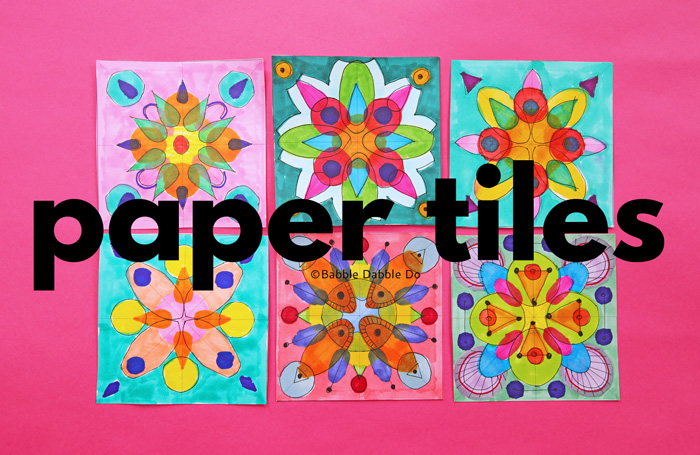
This post contains affiliate links.
I am a pattern loving creator. I’ve never been very good at figurative art but let me loose with geometric shapes and I can’t stop drawing! For today’s project I created a template with a simple stencil you can cut out and use to decorate a paper tile, much like the decorative tiles you see in Spanish and Islamic architecture. I recommend that you print this on cardstock if possible, it will make for a sturdier stencil, but paper works in a pinch.
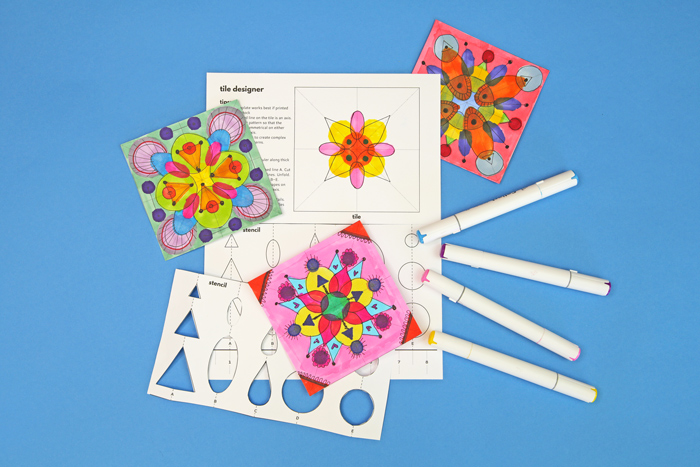
Paper Tiles Materials
This project was created for HP’s Print & Learn Initiative in Summer 2020. You will be directed to HP’s website for the template download.
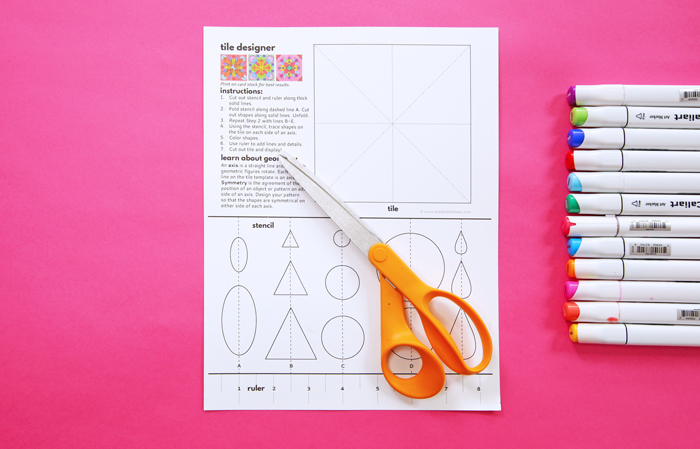
- Paper or Cardstock
- Template
- Scissors
- Markers These are my favorite!
- Pens
Paper Tiles Instructions
Time needed: 15 minutes.
Make artful tiles out of paper
- Cut out stencil
Cut out stencil and ruler along thick solid lines.

- Cut out stencil shapes
Fold stencil along dashed line A. Cut out shapes along solid lines. Unfold. Repeat Step 2 with lines B-E.

- Start designing!
Using the stencil, trace shapes on the tile on each side of an axis.

- Continue layering shapes
Color and layer shapes.

- Outline shapes
Make the shapes and design pop by outlying them in black using a pen. Use the paper ruler to add lines and details.

- Cut out tile
Cut out tile. Make additional tiles and display together.

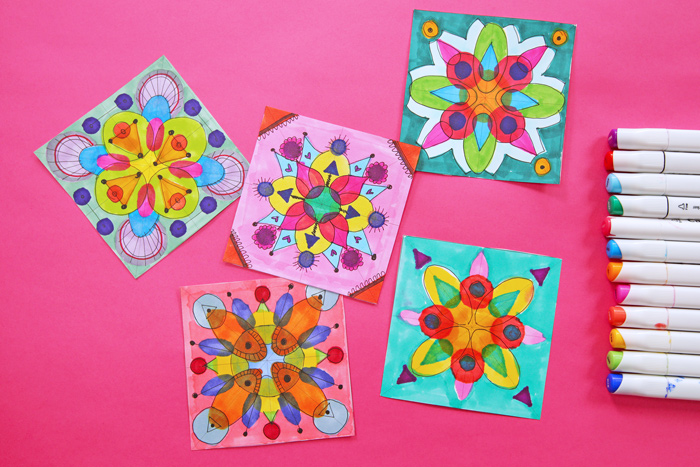
Tips
- This template works best if printed on card stock.
- Each dotted line on the tile is an axis.
- Design your pattern so that the shapes are symmetrical on either side of each axis.
- Overlap shapes to create complex designs and patterns.
Let’s Talk STEAM
Art
Geometric Art is a form of art that uses geometric shapes and lines to create compositions. In the 20th century it has been referred to as geometric abstraction. Artists who are known for creating geometric art often overlaps shapes, lines, and color to create art that is modern, minimal, and sometimes playful. You can see some examples of geometric art and learn more about individual art movements that utilized it here.
Decorative tiles are a primary feature in Islamic and Spanish architecture. In Islamic art figurative images are not used, so artists make use of complex, overlapping geometric patterning in the tiles and other objects used in architecture and design. Persian and Turkish rugs usesintricate patterning. You can read more about Islamic geometric patterning and see examples here and here.
Spain was under North African Islamic rule for 800 years and the decorative traditions of using patterned tiles are prevalent throughout its architecture as well. Spanish geometric tile designs are typically less complex than the decorative tile work of Islamic art. You can see some examples here.
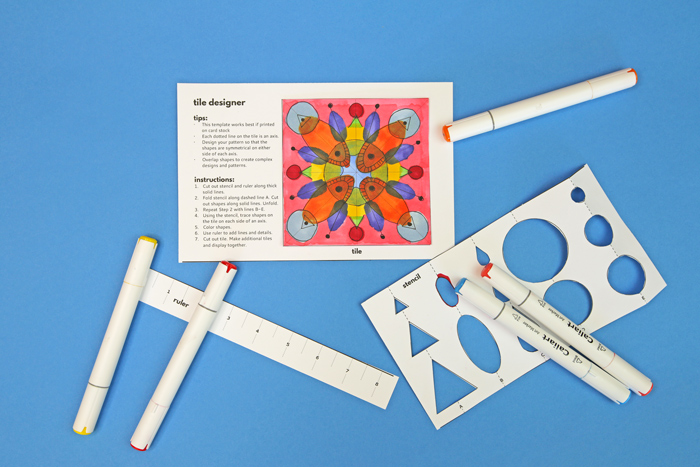
Math
An axis is a straight line around which geometric figures rotate. Each dotted line on the tile template is an axis. The axes that run horizontally and vertically are orthogonal. The axes that run from corner to corner are diagonal.
Symmetry is the agreement of the position of an object or pattern on either side of an axis. Design your pattern so that the shapes are symmetrical on either side of each axis.
More
If you enjoyed this geometric art project here are two more to try: Infinity Tiles and String Art Stars
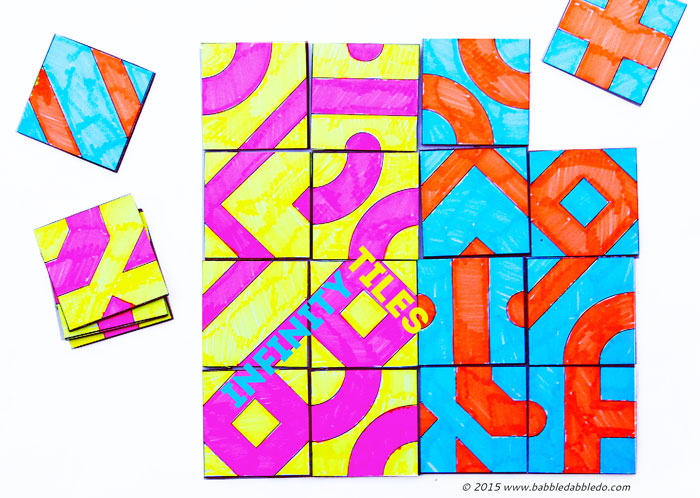
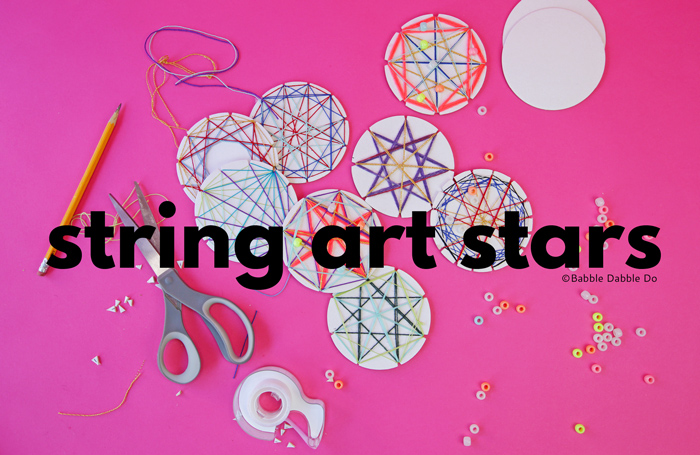
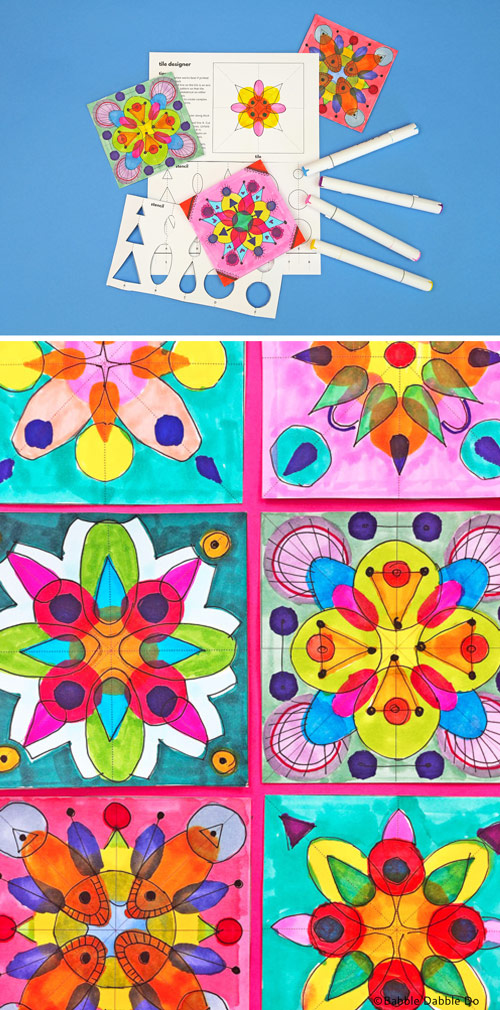

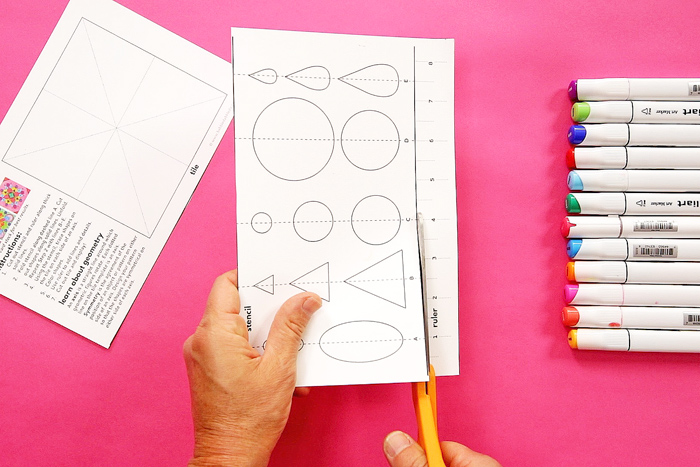
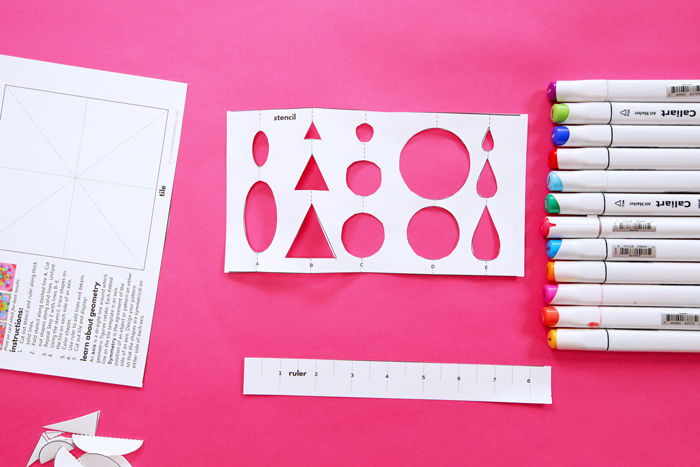
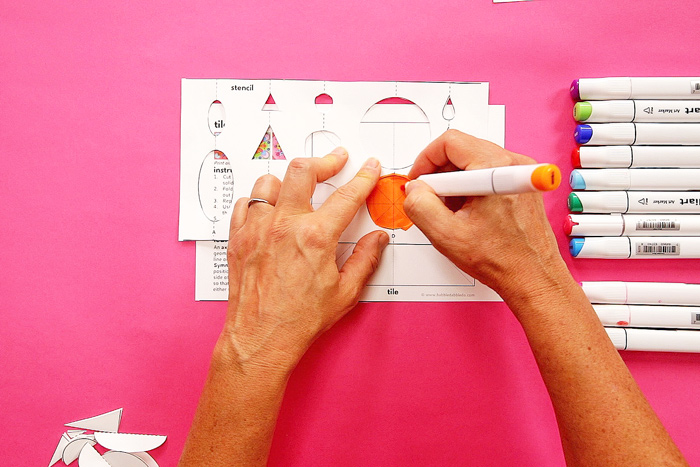
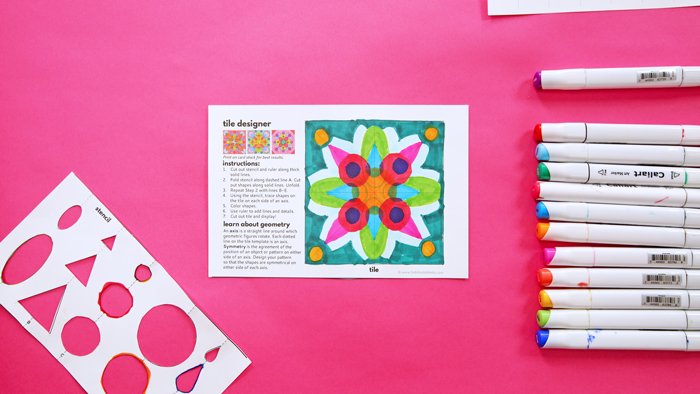
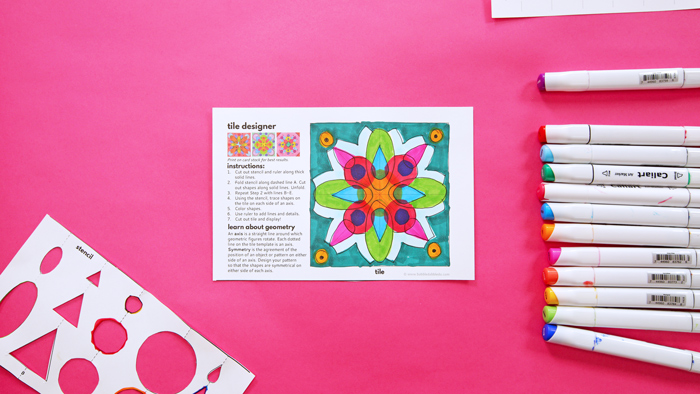
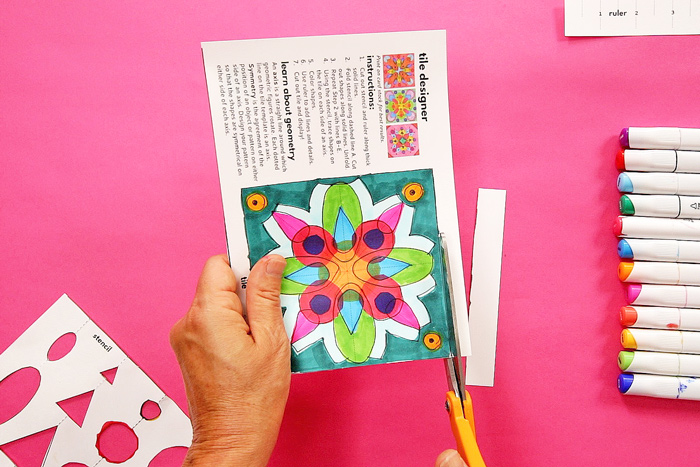
Thank you for this great idea and template. I can’t imagine what you are enduring with the wild fires at the moment, I can only hope that things improve soon.